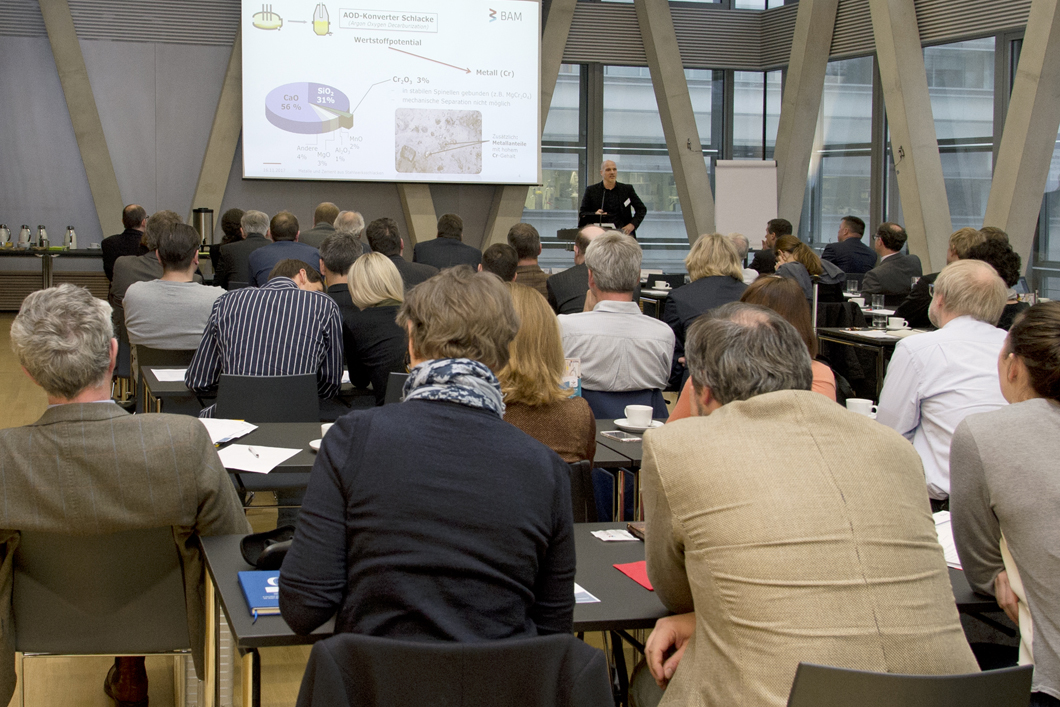
Dr. Christian Adam, Head of the Thermochemical Residues Treatment and Resource Recovery Division, presented research results on the extraction of metals and cement from steelworks slags during the workshop.
Source: BAM
Extraction of raw materials from residues is primarily focused on technological metals in many cases as this provides the highest added value. In contrast, utilisation of the main material flow, which is typically mineral is often given little attention. We can however only increase raw material productivity, a declared goal of the Federal Government, if these large material flows are available in high quality to the circular economy. This requires both the development and application of suitable processing technologies and a receiving market of the same order of magnitude. The building materials sector has a special role to play with regard to the large quantities of materials occurring.
Workshop addresses challenges, options for action and future prospects in the utilisation of bulk residues
Against this background, BAM organised the first workshop entitled "Mass residues as raw material sources – recovering metals and upgrading the mineral fraction" at the end of last year. The workshop was intended to help identify potentials and barriers and needs for improvement in the recycling of bulk residues. Apart from BAM, renowned speakers from the Fraunhofer Project Group for Materials Recycling and Resource Strategy IWKS, Empa, Clausthal University of Technology, Technische Universität Bergakademie Freiberg and the Karlsruhe Institute of Technology and Prof. Dr.-Ing. Uwe Görisch GmbH presented new results and ideas from research and practice. Challenges, options for action and future perspectives for the utilisation of bulk residues were discussed with the workshop’s participants from ministries, authorities, universities, research institutes, associations and industry.
The discussion revealed that there are many approaches, good recycling products and a variety of interesting processes. On the other hand, however, there are unbalanced legal framework conditions (for example the draft of the Mantelverordnung (umbrella ordinance) AwSV Ordinance on Installations for Handling Water Polluting Substances). A balance between water and soil protection and a resource-efficient circular economy must be sought.
Another barrier was the lack of acceptance for RC building materials. Here, for example, the classification of all quality-controlled RC building materials as products could remedy the situation especially since the legal status of products is more favourable. A product-neutral call for tender for public building projects may be an important contribution to boosting acceptance of RC building materials.
Need for forward-looking research in the development of new materials and their life cycle
Basically, there is a need for further forward-looking research. This includes not only the development of new building materials or ‘multicomponent recycling’, for example, but also life-cycle considerations / life cycle management and the inclusion of thoughts on the dismantling and subsequent recycling or reuse of materials and systems.
Further information on the environmental behaviour of materials and products, recycling and material science and materials technology at BAM can be found at Conserving resources and promoting growth and Materials - Key technology for a modern society.


